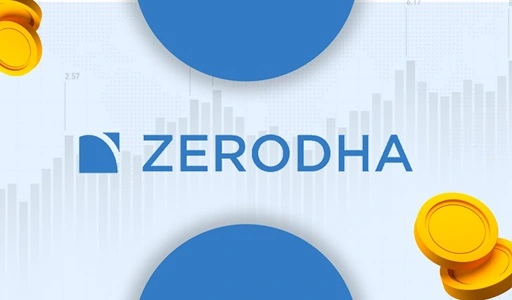Zerodha, founded in 2010 by Nithin Kamath and Nikhil Kamath, has revolutionized the stockbroking industry in India with its low-cost and technology-driven trading platform. As one of the largest retail stockbrokers in India, Zerodha has democratized trading and investment for retail investors by offering transparency, zero brokerage on equity delivery trades, and a flat fee structure for intraday and other transactions. With over 12 million users as of 2023, Zerodha commands a significant share of the Indian trading and investment market. This article explores Zerodha’s business model and explains how it generates revenue.
Overview of Zerodha’s Business Model

Zerodha operates on a discount broking model, offering its services at a fraction of the cost of traditional brokerage firms. Its business model centers on:
- Flat-Fee Brokerage: Charging a fixed fee for trades instead of a percentage of the transaction value.
- Self-Service Platform: Leveraging technology to offer a user-friendly platform, reducing dependency on manual customer support.
- Diversified Investment Products: Providing access to equity, derivatives, mutual funds, bonds, and commodities.
- Education and Research: Empowering users with tools and resources like Zerodha Varsity to improve financial literacy and trading skills.
This lean, tech-driven approach enables Zerodha to maintain low operational costs while scaling rapidly.
Revenue Streams
Zerodha’s revenue comes from multiple sources, primarily brokerage fees and value-added services:
a) Brokerage Fees
Zerodha’s core revenue stream is the brokerage fee it charges for trades. Its flat-fee model is a major differentiator in the industry.
Revenue Model:
- Equity Delivery: No brokerage is charged on equity delivery trades (buy and hold).
- Intraday and F&O Trades: A flat fee of ₹20 or 0.03% (whichever is lower) per trade for intraday, futures, options, commodities, and currency trades.
- This flat-fee structure attracts high-volume traders, contributing significantly to Zerodha’s revenue.
b) Subscription Fees for Platforms
Zerodha offers subscription-based tools and platforms for advanced trading and investment management. These include:
- Kite: Zerodha’s flagship trading platform, free for all users.
- Console: A back-office platform providing detailed reports and analytics.
- Streak and Sensibull:
- Streak: A platform for algorithmic trading and strategy building.
- Sensibull: An options trading platform with advanced features.
Revenue Model:
- Subscription fees for premium features on third-party integrations like Sensibull and Streak.
c) Mutual Fund Distribution (Coin)
Through its Coin platform, Zerodha enables users to invest directly in mutual funds without any commission.
Revenue Model:
- Zerodha charges a ₹50/month subscription fee for investments beyond ₹25,000.
- This creates a recurring revenue stream from active mutual fund investors.
d) Interest on Funds
Zerodha earns interest income from the funds maintained in clients’ trading accounts.
Revenue Model:
- A portion of the unused funds in trading accounts is invested in liquid assets, earning interest.
- While clients don’t pay directly for this, it forms a significant source of Zerodha’s earnings.
e) Margin Lending
Zerodha offers margin trading facilities to its clients, allowing them to trade with borrowed funds.
Revenue Model:
- Interest is charged on the borrowed amount, typically ranging between 8% and 12% annually.
- This service caters to traders who need additional leverage for intraday or F&O trades.
f) Annual Maintenance Charges (AMC)
Zerodha charges an annual maintenance fee for demat accounts held by its clients.
Revenue Model:
- The AMC fee is ₹300 per year for individual investors, contributing to Zerodha’s recurring revenue.
g) Educational Platforms
Zerodha provides free and premium educational content through its Varsity platform and other initiatives. Additionally, it runs TradingQnA, a community forum for traders and investors.
Revenue Model:
- While Varsity is free, some advanced content and certification courses are monetized.
- Indirect revenue is generated by building user trust and engagement, leading to higher trading volumes.
h) Partner Program
Zerodha has a referral and partnership program where individuals and businesses can earn commissions by referring clients to the platform.
Revenue Model:
- Zerodha retains a share of the brokerage generated by referred clients while paying out the rest to partners.
Cost Structure
Zerodha operates with a lean cost structure that focuses on automation and scalability:
a) Technology and Infrastructure
- Investments in maintaining and upgrading the Kite platform, API integrations, and other tech-driven services.
- Costs associated with cybersecurity and ensuring platform reliability.
b) Regulatory Compliance
- Adhering to SEBI regulations and maintaining compliance requires significant investment in legal and operational resources.
c) Customer Support
- While the self-service model minimizes dependency on manual support, Zerodha maintains a dedicated team for technical and operational assistance.
d) Marketing
- Zerodha relies on minimal advertising, focusing instead on word-of-mouth, referrals, and organic growth.
Unique Features Driving Revenue Growth
Zerodha’s unique approach to broking has been a key factor in its rapid growth:
a) Flat-Fee Brokerage
By eliminating percentage-based brokerage fees, Zerodha attracts both retail and high-frequency traders.
b) Technology-Driven Solutions
Platforms like Kite and Console provide a seamless user experience, ensuring high customer satisfaction and retention.
c) Diverse Offerings
From equities to mutual funds, Zerodha caters to a broad spectrum of investors and traders, creating multiple revenue streams.
d) Focus on Education
Through Varsity, Zerodha enhances financial literacy, turning beginners into active traders and investors.
e) No External Funding
As a bootstrapped company, Zerodha remains profitable and independent, reinvesting profits into its technology and services.
Challenges and Opportunities
Challenges
- Intense Competition: Facing stiff competition from other discount brokers like Upstox, Angel Broking, and Groww.
- Regulatory Changes: Adjusting to evolving SEBI guidelines and compliance requirements.
- Market Dependency: Revenue is heavily reliant on market activity, making it susceptible to downturns.
Opportunities
- Tier 2 and Tier 3 Markets: Expanding financial services to smaller cities and towns can drive user growth.
- Wealth Management Services: Introducing robo-advisory or portfolio management services.
- Global Expansion: Exploring opportunities to provide trading platforms in other emerging markets.
Financial Overview
Zerodha has been profitable since its inception, a rare feat in the startup ecosystem. In FY 2023, the company reported revenues of over ₹5,000 crore, driven by a surge in retail trading activity and its diversified offerings. Its lean operational model and tech-driven focus contribute to its strong financial health.
Conclusion
Zerodha’s business model exemplifies how innovation and customer-centric solutions can disrupt a traditional industry. By leveraging technology, a flat-fee structure, and educational initiatives, Zerodha has positioned itself as a leader in India’s financial ecosystem. With increasing retail participation in the stock market and opportunities in wealth management, Zerodha is well-poised to sustain its growth and redefine trading and investing in India.

